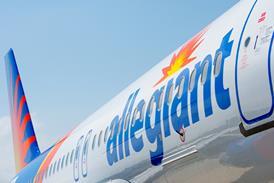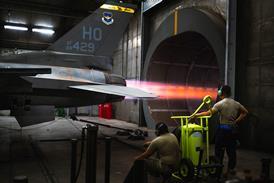Alan Peaford
Back in the Second World War, aircraft manufacturers looking for ways to speed up the assembly process came up with the moving production line. Now Boeing has gone back to that system and applied it to its lean manufacturing techniques in a move that the company says could halve the time it takes for final assembly of its single-aisle 717/737/757 aircraft. "As well as shortening the time it takes to deliver airplanes, the continuously moving production line will improve production efficiency and quality," says Mary McDowell, superintendent 737 Final Assembly, at Boeing's Renton, Washington plant.
A continuously moving assembly line slowly moves the aircraft from one assembly team to the next. The technique keeps production moving at a steady pace, allowing employees to gauge production status at a glance and it's reduced the amount of work-in-progress inventory. Standard assembly-line work is repeated on each airplane to boost efficiency. Drawings, parts and tools are brought in a point-of-use approach to the mechanics, so they have everything they need where and when they need it. Within a few feet of the assembly positions are support teams equipped with everything necessary to keep airplanes moving - including employees who inspect work as it is done. "We have worked with the mechanics to develop the system," says Dowell. "Of course there have been some resistance to change but people are beginning to see the benefits as each aircraft that goes through is better than the previous one." The innovators on moving line were at Long Beach on the 717. Now the Next Generation 737 is on line and simulation tests have been completed for the first moving line for the 757. "It is an exciting move," says Dowell, "and we are continually finding ways of improving as we go along."
Source: Flight Daily News























